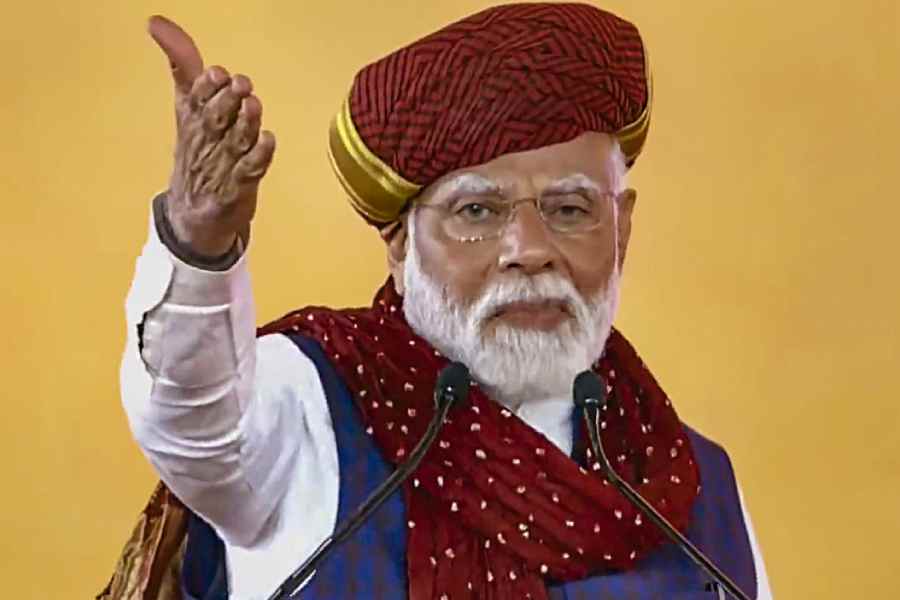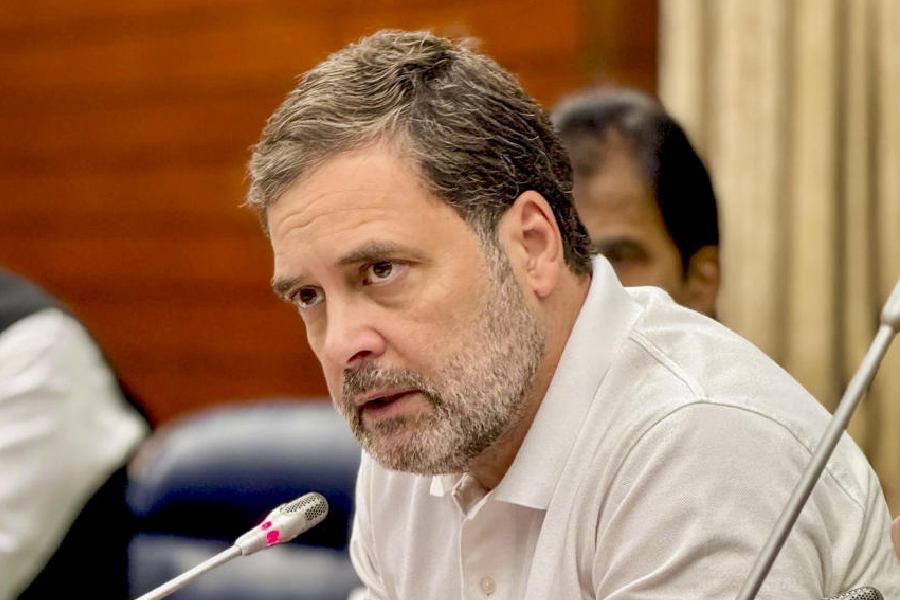Five years ago, this is the week when the political fortunes of Narendra Modi swung sharply in his favour during the campaign for the Lok Sabha elections, resulting in his second term as India’s prime minister. In January 2019, India Today’s Mood of the Nation Survey gave his party 202 seats and the National Democratic Alliance 237, far short of the half-way mark of 282 seats. The Bharatiya Janata Party eventually won 303 seats in the Lok Sabha, and the bounty — irrespective of the exact number, other reliable surveys have also recorded that it was a significant figure — came from the Balakot airstrike episode that played out in full public glare.
On February 14 that year, a Kashmiri suicide bomber drove his explosive-laden car into a convoy of buses transporting CRPF personnel from Jammu to Srinagar. The then Indian high commissioner to Pakistan, Ajay Bisaria, writes in his recent book that the young man hit the convoy in a manner that led to the death of 40 CRPF troopers. Modi was busy shooting for an episode of Man vs. Wild with Bear Grylls at the Corbett National Park and got in touch with the Jammu and Kashmir governor, Satyapal Malik — the state was under Central rule — hours later in the evening. Malik claimed that he was told to stop talking about the intelligence, logistics and security failures that led to the tragedy: “‘Tum abhi chup raho…’ I had already said this to a couple of channels. He said, ‘Yeh sab mat bolo, yeh koi aur cheez hai. Hame bolne do…’”
A narrative that deflected all questions of accountability from the Union government, shrouding it in the drumbeat of ‘muscular foreign policy’ and ‘tough stance on Pakistan’, soon took hold. The result was an airstrike on February 26, 2019 at a madrasa in the Khyber-Pakhtunkhwa province of Pakistan that lay close to the Line of Control in Kashmir. In an official statement, the foreign secretary claimed that it was “a non-military, pre-emptive action” at the biggest training camp of Jaish-e-Mohammed in Balakot. There were neither official figures of casualties nor evidence of the damage caused to the buildings that stand atop a ridge surrounded by forests. Many foreign governments and commercial satellites were able to provide detailed images of the targeted site. Within a few days, it was clear that the Indian air force had missed the target, its Israeli precision-guided munition overshooting the buildings by a few metres to land in the forest.
In what seemed like a display of medieval notion of restoring honour, Pakistan retaliated by targeting a few sites near Indian military camps and logistics bases in Jammu and Kashmir. Indian fighter jets scrambled to take on the intruding aircraft but were hampered by an archaic communication network, which led to a MiG-21 being shot down and its pilot being taken captive as he evacuated on the Pakistani side. The Indians claimed, with sketchy evidence, that the pilot had shot down a Pakistani F-16 fighter jet before going down. Pakistan claimed, again with little evidence, that it had also shot down a Su-30MKI of the Indian air force in the aerial skirmish. The two air forces continue to stick to their respective claims.
Meanwhile, in this melee, an IAF Mi-17 helicopter, with seven persons on board, was shot down by the Srinagar air base, assuming that it was a Pakistani weapon. This case of fratricide was not accepted by the IAF till the elections had been held. The same evening, an IAF fighter jet fired missiles that missed the intended target — presumably its own aircraft — and fell to the ground. It was reported by the local news television stations and the state police but not widely reported as the media’s attention had been shifted to the captured fighter pilot. That he became an unblemished hero was a testimony to the power of narrative-building of the mainstream media, but it was the fraught diplomacy over his return that was to raise the risk of conflict between two nuclear-weapon states in South Asia.
Multiple accounts suggest that the Indian side threatened to fire a certain number of missiles into Pakistan if the captured pilot was not returned safely and quickly. The Pakistani side told the Western countries, primarily the United States of America and the United Kingdom, that it would fire thrice the number of missiles onto Indian targets. It later emerged that India had deployed its nuclear submarine in the Arabian Sea. Things had turned serious and the Western countries then worked with both governments to de-escalate the situation. Even Beijing offered to act as an interlocutor which New Delhi declined to accept. The United Arab Emirates and Saudi Arabia were also involved. The Indian side was also concerned about the internationalisation of the Kashmir issue, particularly if Pakistan were to take it to the United Nations.
The then US secretary of state was to later recount in his memoirs, “I do not think the world properly knows just how close the India-Pakistan rivalry came to spilling over into a nuclear conflagration in February 2019.” Mike Pompeo writes he was woken up by an urgent call from a senior Indian official. “He believed the Pakistanis had begun to prepare their nuclear weapons for a strike. India, he informed me, was contemplating its own escalation. I asked him to do nothing and give us a minute to sort things out.”
Even before Pompeo stated this, Modi had spoken about the episode in his election rallies in 2019, “Fortunately, Pakistan announced that the pilot would be sent back to India. Else, it would have been qatal ki raat, a night of bloodshed,” he said in Patan in April 2019. Addressing an election rally in Barmer the same month, Modi said the strategic experts earlier used to warn that Pakistan had the nuclear button. “What do we have then? Have we kept our nuclear bomb for Diwali?” he asked.
Many Indian analysts argue that Balakot illustrated that strategic space exists for limited use of military force even inside mainland Pakistan and that fears that any level of conflict would escalate into the nuclear domain are unfounded. However, Pakistani experts argue that Balakot “amply demonstrated” that “Pakistan’s nuclear weapons continue to serve the purpose for which they were developed… It is precisely the presence of these nuclear weapons that deters, and in this specific case, deterred India from expanding operations.”
Both sides somehow presume that escalation control is built in structurally in any high-profile bilateral conflict. This was not true even in the Balakot episode. Militarily unsuccessful for India, the whole saga was politically rewarding for Modi. Keen to display a strongman image by making swift and decisive moves, a political leader with an eye on electoral benefits can ratchet up tensions and fuel escalation dynamics.
We need to change the conflict dynamics and the context of the conflict and not merely hope for a big dose of good fortune with crisis management between two nuclear powers.
Sushant Singh is Lecturer, Yale University











